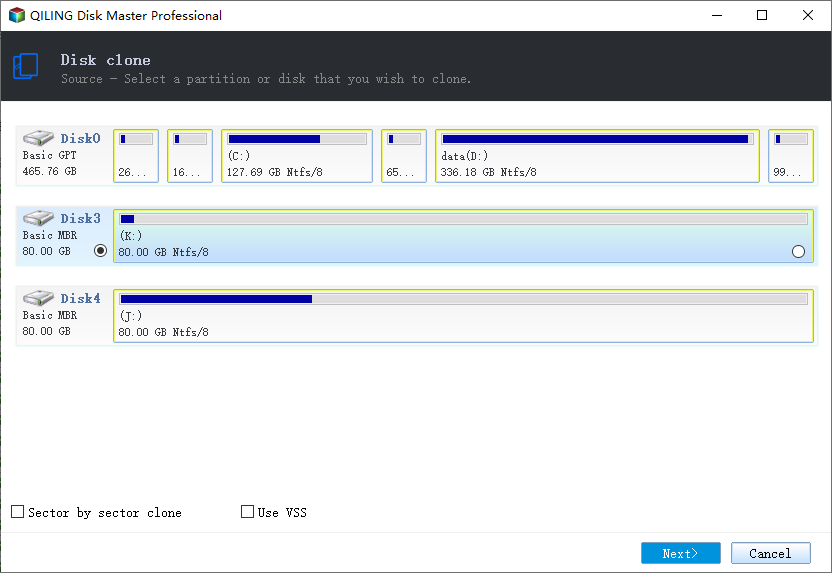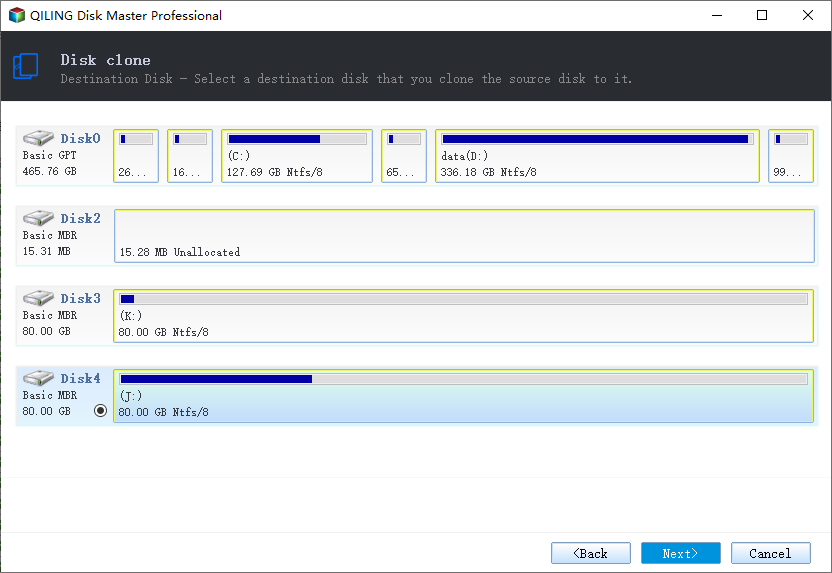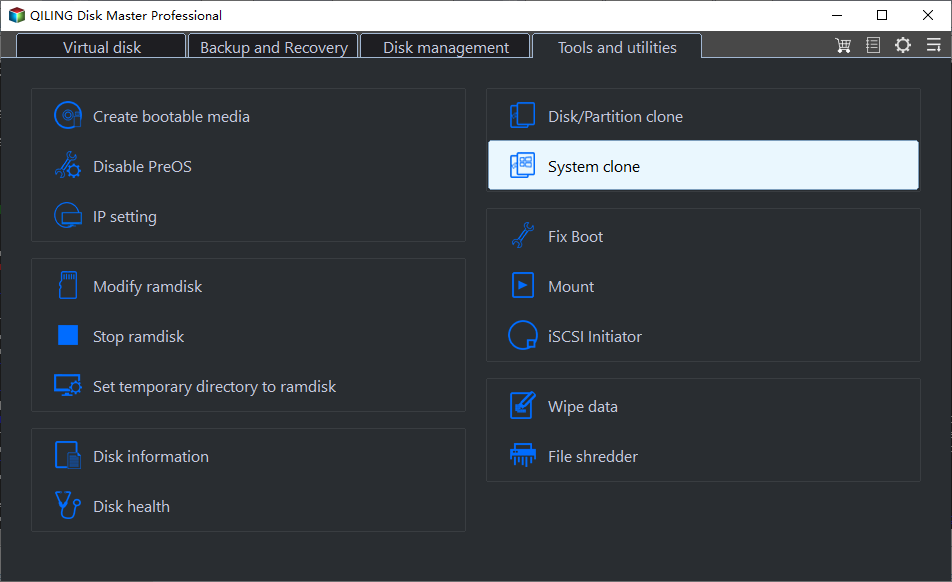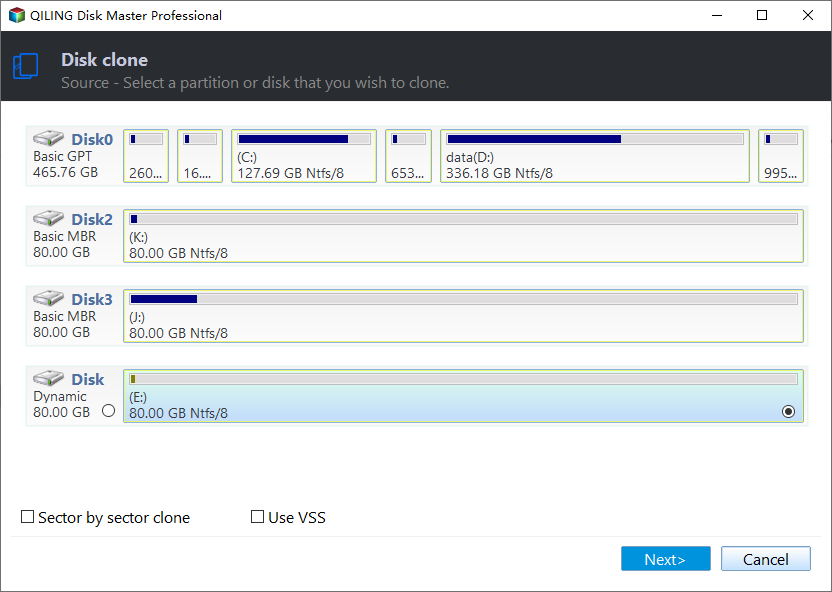How to Clone A Hard Drive with Multiple Partitions
Case: How do I clone hard drive with multiple partitions
I have a 1 TB hard drive with 4 partitions, including one system partition and three data partitions. I try to clone OS to SSD for a better performance and clone other data partitions to a new disk. Then, remove the old drive. I want to know if this works. Any suggestions are welcome.
As more and more data piles up on your hard drive, the read and write speeds become slower and slower, and you may find it difficult to perform some daily operations smoothly. At this point, you may want to migrate all your data to a HDD with larger capacity, or an SSD with better performance.
The problem is, a hard drive often consists of multiple partitions - usually a system partition and several data partitions. How can you clone a hard drive with multiple partitions properly without messing up the OS or the data?
Cloning multiple partitions scenarios and corresponding methods
The first obvious fact is that Windows does not come with a cloning feature. It is true that you can restore system image to another drive for disk migration, but considering the ease of operation and success rate, disk cloning software is definitely a better choice.
It not only eliminates the recovery step, but also makes it easier to boot successfully from the target disk. With a high quality cloning solution such as Qiling Disk Master, you will also be given options to clone entire disk or separate partitions to suit your needs.
Here I will use Qiling Disk Master Professional as an example to show you how can disk cloning tool help you clone hard drive with multiple partitions in different scenarios.
Scenario 1. Clone entire hard drive to another SSD/HDD with secure boot
Some users are concerned about whether they should create the same partition on the target drive to accept the data from the source drive, but this is actually not necessary because your target drive will be completely overwritten during the cloning process.
The real thing to consider may be the difference in size between the source and target disks. Luckily, Qiling Disk Master enables you to clone larger HDD to smaller SSD with the intelligent-sector technology. If, on the contrary, your target drive is larger, you can also use the Edit Partitions option to allocate unused space and make the full use of the disk capacity.
Scenario 2. Clone system partition to new SSD other data partitions to another disk
As mentioned in the opening case, some users may only want to clone the system partition with Windows 11/10/8/7 installed to an SSD as the new boot drive, which is a good choice because an SSD is built to deliver faster boot speeds.
As for the remaining data partitions, some people may want to leave them on the source drive, while others want to clone them to a larger HDD as the secondary storage drive. With Qiling Disk Master's system clone and partition cloning features, all these needs can be achieved.
You can download the free trial of Qiling Disk Master Professional to experience all these benefits:
Step-by-step to clone a hard drive with multiple partitions
Whether you want to clone all partitions to SSD, or clone only system partition to SSD and other data partitions to HDD, Qiling Disk Master is a reliable helper. With it, you don't need to worry about the different sizes, different disk types (HDD/SSD) or different partition styles (MBR/GPT)
Now, I will give examples to clone hard drive with multiple partitions step by step. Keep reading and follow the tutorial to have a try.
How to clone all partitions on a hard drive to SSD entirely
Step 1. Download, install and launch Qiling Disk Master Professional. Select “Disk Clone” under “Clone” tab.
Step 2. Choose the old disk with multiple partitions (here is disk0), and then click “Next” to continue.
Step 3. Choose the destination disk (here is disk1), and then click “Next”.
Step 4. In this window, you can view the operation summary. Optionally, you can select “SSD Alignment” when cloning disk to SSD, or check “Sector By Sector Clone” if you want to copy every sectors no matter used or not to a disk of equal or larger size.
Then click “Proceed” to execute the operation.
✎Notes:
👉This software also supports cloning dual-boot hard drive to SSD, dynamic disk system and volume.
👉Edit Partitions: It allows you to resize the partition size on the destination disk as well convert disk type if it's different from souce disk.
- Copy without resizing partitions: It will not resize the partition size.
- Add unused space to all partitions: Reallocate the unallocated space to each partition of the target disk.
- Manually adjust partition size: Extend unallocated space to any partition on the destination disk you want.
- Convert the destination disk from MBR to GPT: You can choose to convert the partition style of the destination disk if it is different from the source disk.
How to clone system partition and data partitions separately
As mentioned before, if you have different dispositions for the system partition and the data partitions, you can also operate on them separately via Disk Clone and Partition Clone features.
To clone only the system, you can choose the “System Clone” option from the Tools and utilities tab. It will automatically select all the boot-related partitions on the source drive, you just need to follow the on-screen instructions to select the target disk, and start the cloning subsequently.
To clone only data partition (s), you need to click “Partition Clone” instead, and select one or multiple non-system partitions you want to clone, then follow the wizard to complete the operation.
All the cloning steps are largely the same.
How to boot from the cloned hard drive or SSD
When the cloning process is complete, you can shut down the computer, and replace the old hard drive with the new one, then start the computer to boot from the cloned drive.
◉ If you have more than one slot, you can also keep the old hard drive connected as a secondary drive. Just press the specific key (depends on make and model, could be Del, F2, F8, etc.) to enter BIOS, and select the cloned drive as the first boot option. If it boots into Windows normally, then the cloning is successful, you can wipe the old drive and keep it for storage.
◉ If have cloned the system partition to SSD and data paritions to another hard drive, the approach is similar. Just replace the old hard drive with the new boot drive, make sure it can boot into Windows normally, and then attach the cloned drive with data partitions.
Note:
The partition style (GPT or MBR) of the boot drive should be compatible with the boot mode (GPT/UEFI and MBR/Legacy BIOS). If the cloned boot drive has different partition style with the source hard drive, you will need to change the boot mode in BIOS accordingly.
For example, if you cloned a MBR disk to a GPT SSD without converting the partition style, the GPT style will be incompatible with the old Legacy BIOS boot mode. In order to boot from the GPT SSD properly, you will need to change Legacy into UEFI boot mode, otherwise you may find the cloned SSD won’t boot.
If you want to check the partition style of your disks, press Win + R to open the Run window -> type "diskmgmt.msc" and hit OK to open Disk Management -> right-click the disk and select "Properties" -> select "Volume" tab -> find the "Partition style", which can be Master Boot Record (MBR) or GUID Partition Table (GPT).
Wrapping things up
To clone a hard drive with multiple partitions to HDD or SSD, you can try “Disk Clone” feature. With its useful feature, “Edit partitions”, “SSD Alignment”, you can clone disk include partitions to larger disk or smaller SSD without any obstacle or maximize the performance of SSD.
Beside the clone feature, you can consider backup and restore feature. It also allows you to transfer data from several partition to a new hard drive. Download Qiling Disk Master and enjoy your new journey.
Related Articles
- The Easiest Way of Copying Drives with Different Block Sizes
- Solution to Samsung Data Migration Multiple Partitions Clone
- Free Clone Multiple Partition Hard Drive to SSD
- Clone Hard Drive with Different Size | Easy & Free








